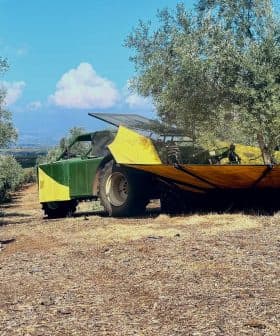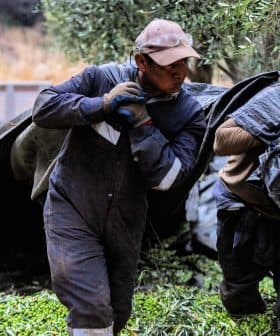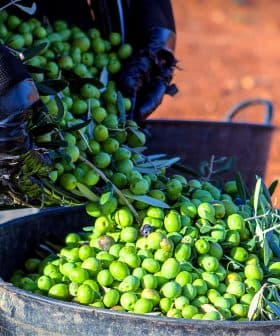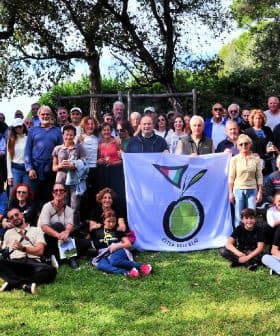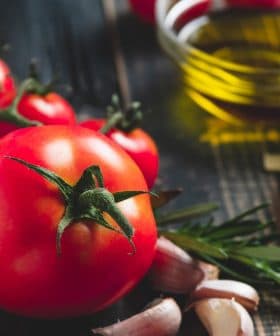Researchers Develop Algorithm to Predict Harvest Potential from Climate Data
The publicly available algorithm was developed using 15 years of data from Italy to compare how combinations of climatic events impacted subsequent harvests.
 Archanes, Crete, Greece
Archanes, Crete, Greece An algorithm developed by researchers in Italy and the US can forecast an olive grove’s behavior and productivity by analyzing climate impacts on olive development and harvests. The algorithm, which is publicly accessible, can help stakeholders predict upcoming seasons and make necessary adjustments in agronomic practices based on identified climate stressors. The method can be applied beyond Italy to other countries and sectors to provide useful seasonal forecasts.
Almost one hundred production stakeholders have downloaded an algorithm that may provide the ability to forecast an olive grove’s behavior and productivity.
The new technology is based on a thorough analysis of seasonal weather patterns during the olive growth cycle over a long period in Italy.
By comparing the relationship between olive development and harvests to the climate impacts, researchers were able to identify dozens of potential climate stressors and how they affect olive tree productivity.
See Also:AI Tool for Olive Farmers Will Improve Yields, Reduce Costs, Researchers SayResearchers believe this information might support national or regional administrations, olive growers, producers, and other interested parties in predicting how an upcoming season may unfold and making any agronomic or business adjustments.
The new technology results from a coordinated project involving scientists from the Italian National Research Council (CNR) and the Agency for New Technologies, Energy and Sustainable Development (ENEA) as well as American researchers from the University of California – Berkeley.
“We are working on understanding which [climatic] drivers can trigger unfavorable conditions and the associated probability of experiencing detrimental effects on olive production,” Arianna Di Paola, a researcher at the Italian Institute for BioEconomy at the CNR, told Olive Oil Times.
“Examples of triggers are conditions which favor the spread of the olive fruit fly or high winter temperatures which can alter the olive cycle and impact flowering and pollination,” she added.
The research analyzed olive harvests in 66 Italian provinces between 2006 and 2020 to identify the stressors using a wide range of data. They were able to uncover how the worst olive harvests came to be.
“Understanding the ongoing seasonality allows us to foresee what we may expect in the near future,” Di Paola said.
“These are not seasonal forecasts, which are required to be reliable and translated into actionable information to facilitate the decision-making process, a whole world of research in itself,” she added. “They are short-term scenarios that might support investments, preventive measures, treatments or agronomic practices.”
The research did not stop at identifying the drivers of unfavorable conditions.
“While we cannot yet predict the whole phenological cycle of the olive, as it is not possible to predict the vegetative onset in the season on regional scales, what we can do is, using a calendar, simply divide the lifecycle of the olive into two-month installments,” Di Paola said.
By analyzing the variables impacting olive production through the years and aggregating them every two months, researchers defined a list of the variables and examined how they interact over time.
The analysis provides a short-term precision forecast, which researchers said is three times better than the analysis of a single variable.
“For example, one thing is to say that we had a warmer winter, another is to say that following that warm winter, we also had a very wet summer, factors which can add up and further worsen the scenario,” Di Paola said.
Once the analysis was ready, the researchers looked at which seasonal climate variables were more often associated with extremely bad or high-yield seasons, discarding the middle-range yields.
This selection aimed to identify yields that, on a broad spatial scale, were most affected by climatic variability given the superimposition of other drivers.
“In middle-range seasons, the yields might depend on variables such as deploying specific agronomic techniques by one grower compared to another, or to the time spent pruning the olives and many more variables,” Di Paola said.
Therefore, researchers were more interested in looking at both plentiful and scarce extreme seasons, as the associated conditions had an impact independent of the actions of the single grower.
“Most of us are used to focusing on single stress factors, such as a freeze or heatwave, but even if we should manage to look at those single stress factors correctly, we would still not be able to associate them to a specific phenological stage without proper field observations or model simulations,” Di Paola said.
“We tried to smooth out all of these effects to consider them together on a large scale and across whole seasons,” she added.
Interestingly, the researchers found a link between the climate variables identified by the algorithm and the olive fruit fly phenomenon.
“The algorithm will not tell you why a specific scenario is going to occur,” Di Paolo said. “However, by applying it, we note that the outputs – worse years in terms of productivity and emerging climate stressors – were plausibly associated with olive fruit fly infestations.”
“What the algorithm tells us is something like: should you have these array of conditions, let’s say five different variables over a given time, then it is highly probable that the olive yield will be exceptionally low,” she added.
Once this warning comes from the algorithm, an expert must look at the data to interpret it correctly. “Is it the olive fruit fly, or are there other factors we should consider?” Di Paola noted.
“We standardized all the variables to make them comparable across time and space, and that allowed us to look at things from above,” she added. “To make it clear, when the research says that a specific trigger is a warmer period than average, that was true across all the provinces in the country.”
By exploring a wide range of the territory, the algorithm’s generalization increases, and better forecasts for the whole sector in the entire country can be achieved.
“This is a useful view of the whole sector for all entities interested in looking at the full picture,” Di Paola said.
The algorithm, which is publicly accessible and can be downloaded and integrated into their systems, might be helpful not only for Italy but also for the olive sector.
“The method we applied can be exported to other countries and sectors,” Di Paola concluded. “Once fed with the needed data, the algorithm can easily be adapted to make that kind of seasonal forecast.”
Share this article



